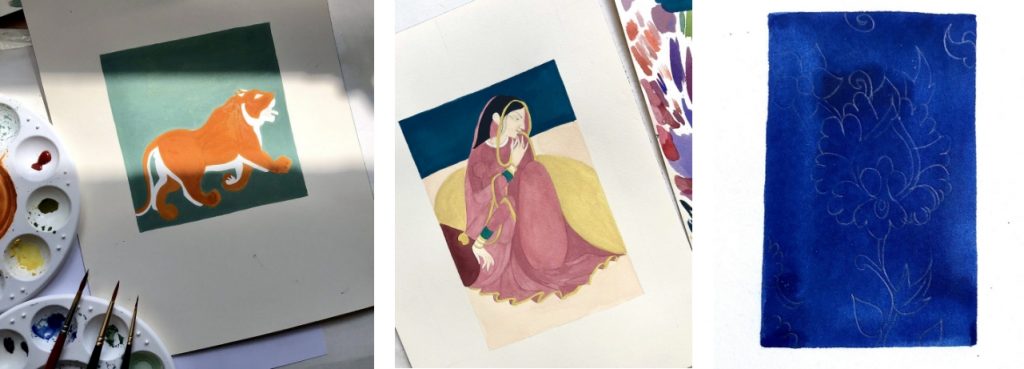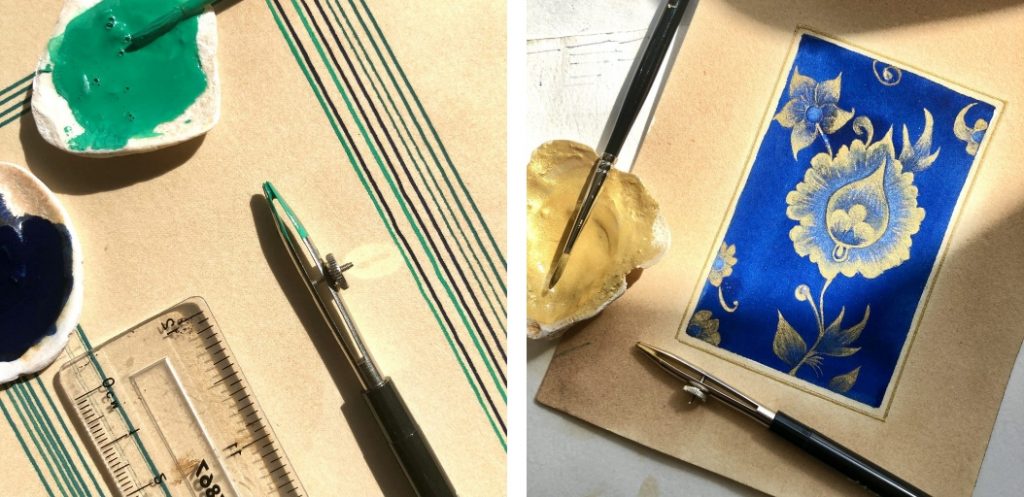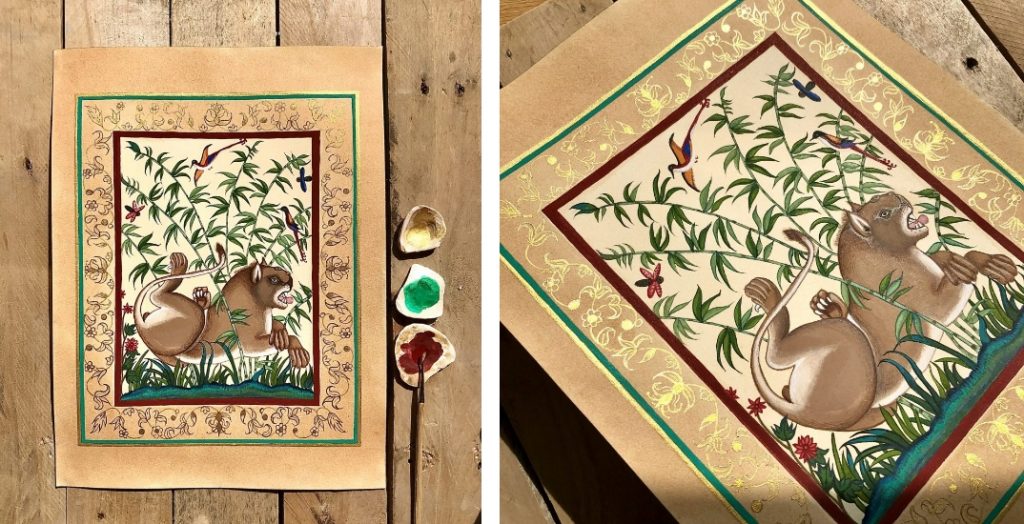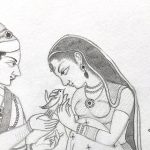Indian Miniature Painting: Tools & Techniques
The bygone masters of traditional Indian painting had a wealth of skills and techniques handed down to them from previous generations which could never be covered in a short blog. No way! However, I can share a few insights here into some useful tools and equipment I have used throughout my recent studies of this artform and dip into just some of the realms of the vast range of traditional techniques that make up the unique charm of Indian Miniature Painting: paper preparation, colour and detail.
Paper
Preparing the paper surface before adding the miniature painting is very important. Traditionally, wasli paper was used. This was several layers of handmade paper glued together with a starch based paste and burnished to even out the surface. For my work, I use a smooth Hot Pressed watercolour paper (300 gsm).
 A wide agate stone burnisher is used to smooth the paper surface
A wide agate stone burnisher is used to smooth the paper surface
Burnishing the paper is necessary to prevent paint and ink bleeding into the paper surface. Above, I’ve shown some agate burnishers I have for gilding and illumination. The wide smooth agate stone burnisher is used for my paper surface smoothing. It’s also popular to use a cowrie shell. Gentle, fast strokes up and down and then left to right for about 10-15 minutes is sufficient until the surface feels smooth and a soft sheen can be seen in the light.
Colour
 Natural earthy pigments were traditionally used for Indian Miniature Paintings and genuine gold and precious lapis lazuli and malachite added a touch of luxury to illuminated manuscripts and royal portraits. In my artwork, I use opaque gouache paints in various earthy hues and mixes to echo this original natural luminescence.
Natural earthy pigments were traditionally used for Indian Miniature Paintings and genuine gold and precious lapis lazuli and malachite added a touch of luxury to illuminated manuscripts and royal portraits. In my artwork, I use opaque gouache paints in various earthy hues and mixes to echo this original natural luminescence.
 Colour-blocking prior to adding detail
Colour-blocking prior to adding detail
The technique of colour-blocking is used to apply larger areas of the drawing with a block of consistent, evenly-toned paint before adding the details which characterise Indian traditional painting. When dry, the colour is again burnished over to add a glaze and to keep a smooth surface to the painting for adding any further detail. At this delicate stage, a protective piece of tissue paper or glassine paper is put over the painted block while burnishing it.
 Using gold to enhance details and to add a luxurious touch
Using gold to enhance details and to add a luxurious touch
I use a range of gold gouache, watercolours and 23 carat shell gold to embellish borders and detailed designs on garments and to add that touch of opulence which the Mughal courts prized in their paintings.
Detail
Applying detail to Indian Miniature Painting requires a lot of patience … that goes without saying! Traditional fine squirrel-hair brushes are used to add delicate lines and strokes to the painting. A technique of invisible shading or prataj is used to give a soft, subtle dimension to fabrics, flowers, animal colours, skin tones, etc.
 Delicate details require fine squirrel-hair brushes
Delicate details require fine squirrel-hair brushes
Soft lines can also be achieved by applying light and dark tones with Chinese ink sticks and ink made from walnuts.
Traditional and natural inks for subtle lines
A tool I find very useful for adding fine and precise lines around a painting is the good old ruling pen! Traditional Indian artists usually applied one or several fine lines to define the edge of their paintings and this practice was known as hashia.
A ruling pen is a useful tool for defining borders
So … I am at an early stage of my Indian Miniature Painting journey and I know that, like all apprentices of this ancient art, there is a lot to learn. But that process of learning and discovery is an exciting one! There are traditional or new techniques to master along with interesting tools and equipment. And there’s nothing more soul-satisfying than using these new skills to produce a painting that brings it all together. My work Basking Lion below, was painted upon burnished paper which I stained using tea and a walnut ink, using vibrant gouache and a gold arabesque border. I used my Indian squirrel-hair brushes to apply the fine details.
Basking Lion. Gouache on stained paper.
Many thanks to The School of Traditional Arts, London & to Dr Susana Marin and Samantha Buckley for their inspirational guidance on the art of Indian Miniature Painting.
All artworks & images ©️Jacqueline Synnott 2021
Recent Posts






